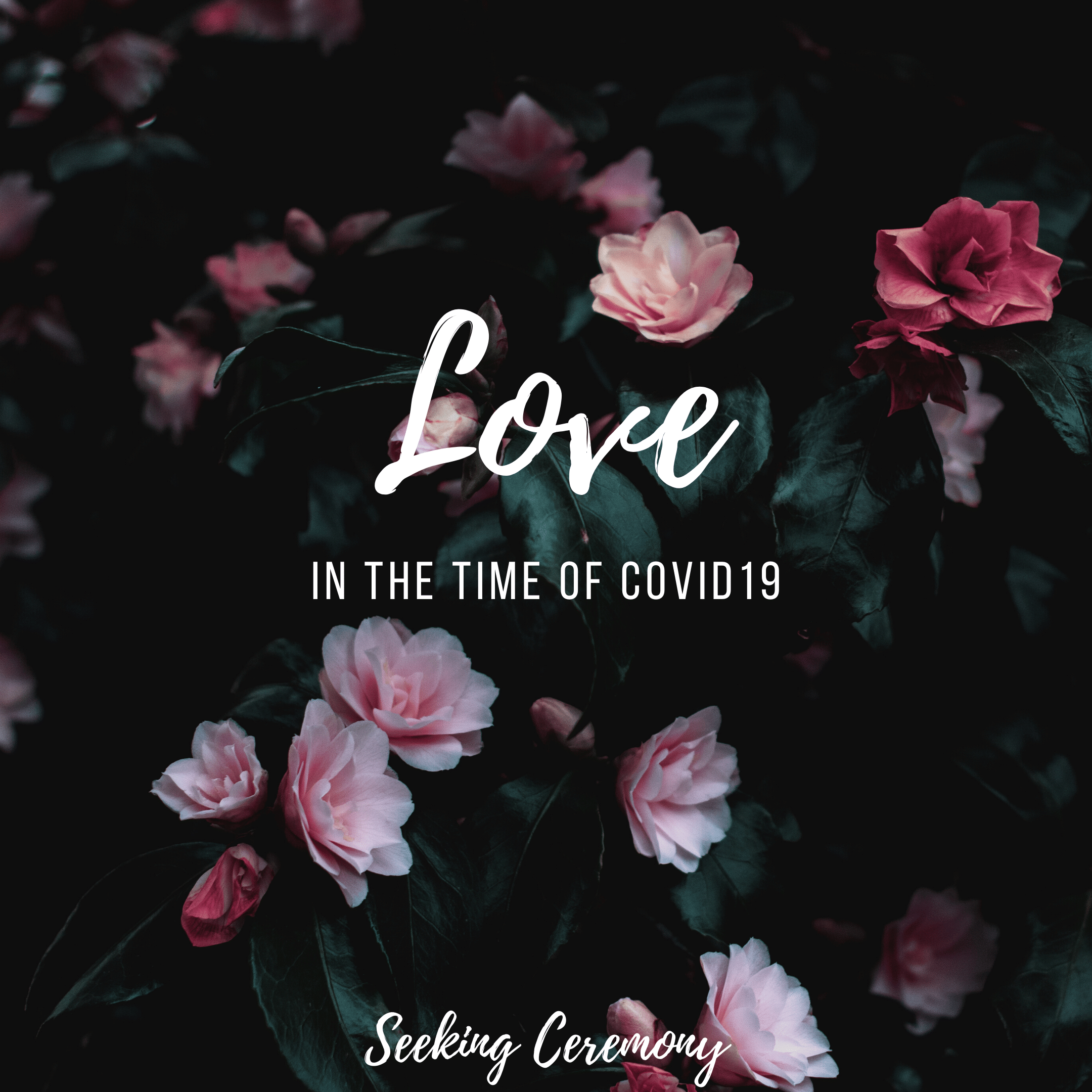Love in the time of Covid19


How do we gather in a 'connection recession'?
Social distancing. It’s a reasonable request, and it is being recommended to flatten the curve of COVID19. People are being asked not to gather in large crowds for an indeterminate period of time. People are being asked to cancel funerals, weddings, sporting events, graduations, conferences, and large family gatherings. Priya Parker, author of The Art of Gathering, sent out a request on Instagram today asking for tips to “collect ways to stave off a loneliness boom" for what she's calling an In Real Life Recession #IRLrecession.
So where does that leave us when it comes to acknowledging and honouring our rites of passage and moments of transition? How can we find connection in and amongst the chaos and fear that’s rapidly spreading? There has, and always will be, a need for ceremony. A 100 years ago, ceremony looked different than it did today, and 100 days from now it may very well look different than it does today. Our world is changing, and instead of looking at social distancing as community isolation, we need to think outside the box and use the tools already at our disposal.
We need to ask ourselves what are the elements of ceremony and ritual we connect most with, and how can we continue to bring them into our lives despite not being able to gather in person? Each of us will draw on a different aspect of ceremony – and that’s okay. Ceremony should never be prescriptive or limiting – it should be a framework to inspire, a path to follow with the permission to veer from that path whenever the need arises. We’ve spent the past few years studying the history of ceremony and ritual, including the ways that ceremony adapts over time. We’ve noticed that there are constants (the things that stay the same), and there are variables (the things that we allow to change). The constants and variables differ for each person, of course, and yet there are ritual elements that tend to be incorporated into most ceremonies. They include a connection to the elements (earth, wind, water, fire).
How we gather has long defined our cultural consciousness and our connection to our community. In fact, we started this project because we were already noticing how people distanced themselves from ceremony, intentionally because of how they perceived it, or unintentionally because the need for it may have been lost along the way. Here’s what we know to be true – we need ceremony. If someone dies, we need to honour their life with those who loved them. If someone gets married, we need to celebrate to acknowledge the importance of that decision. If we lose our job, if we graduate school, if we have a miscarriage, or if we welcome a baby into this world, we need to honour the moment with intention.
So how do we bring ceremony into a world of social distancing? That’s what we’re going to explore here over the coming weeks, and we welcome your stories as you find creative and innovative ways to bring the elements of ceremony and ritual into this new global reality. To begin with, we encourage everyone to start thinking about ceremony on three levels:
Personal Ceremony
My daily ceremony practice includes elements like lighting a candle to symbolize the beginning and end of the ceremony, spraying some scented mist to awaken my senses, writing down the things that make me anxious and bring me joy (see Morning Pages), taking 3 deep breaths to honour myself, my community, and my world, and creating a daily practice of mindfulness and gratitude. Easier said than done, right? We suggest you start small. Find 5 minutes each day and choose 1-2 ritual elements and try them on for size. It takes 66 days to form a new habit, so don't give up...keep trying, be open, and ceremony will find it's way to you.
Family Ceremony
How we begin and end the day is huge, especially when we're facing a shift in how we move through our day. We love the idea of a bedtime ceremony, especially if you have kids. Our family bedtime ceremony includes crawling into bed together, dimming the lights, and asking three simple questions. Each person can decide which ones they want to answer, and we take turns listening. We use the same questions each night: How were you kind today? How were you brave? What are you grateful for? I was inspired by my co-founder Kate's family motto: "Two things stand like stone. Kindness in another's trouble, Courage in your own." - Adam Lindsay Gordon.
Community Ceremony
This is tricky, because we are social! We love meeting going to restaurants, concerts, and having friends over, but for now, we've agreed that we’re going to stick close to home. In order to maintain connections with some of our closest friends, and their kids, we’ve decided to host "Framily Dinner Parties" via Zoom! Everyone cooks or orders the same food (pizza here!), and positions their screen so everyone can see. We all light a candle to begin, toast our glasses symbolically, yelling Skol (Swedish cheers), and start dinner. At some point amidst the chaos, we find a way to say hello to each person (including the little ones) so that everyone feels included.
We like to think of a ceremony as the container, and rituals as the elements. Another way to think about it is that ceremony is the dish, and rituals are the ingredients. So however you decide to step into ceremony during this time of social distancing for some, and isolation for others, remember that you are not alone and there are tools available to you that can maintain a feeling of connection, both to yourself and your community.
